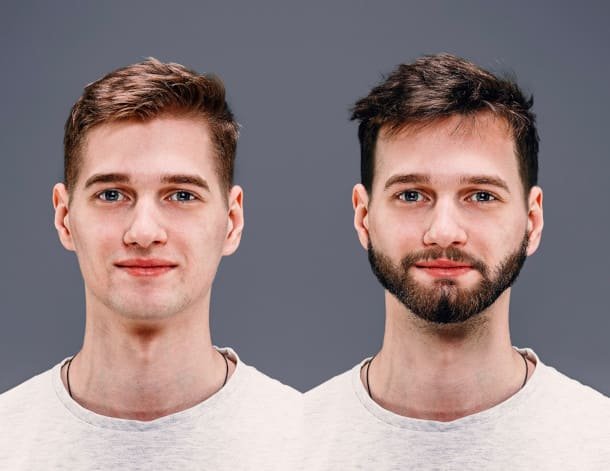In recent years, beards have transcended mere fashion trends to become a symbol of masculinity, identity, and personal style. For many men, a full, well-groomed beard is an essential part of their appearance. However, not everyone is blessed with thick and even facial hair growth. Issues like patchiness, scarring, or even a genetic predisposition to thin or no beard can affect self-esteem and confidence. This is where a beard transplant comes into play—a cosmetic procedure that has gained immense popularity among those seeking to enhance their facial hair. This article will delve into the intricacies of beard transplants, from the procedure itself to the costs and aftercare involved.
Understanding Beard Transplantation
A beard transplant is a cosmetic surgical procedure designed to help men who have thin or patchy facial hair. It involves taking hair follicles from a donor area, usually the back of the scalp, and transplanting them into the beard area. Having a larger, more realistic-looking beard is the aim. Like hair transplants, beard transplants have become a viable solution for those struggling with facial hair growth due to genetics, scars, or hormonal imbalances.
Types Of Beard Transplants
There are two main techniques used in beard transplantation:
- Follicular Unit Extraction (FUE): This method involves extracting individual hair follicles from the donor area and implanting them into the beard region. Compared to other techniques, FUE is less invasive, produces fewer scars, and has a shorter recovery period. It is often preferred due to its precision and natural results.
- Follicular Unit Transplantation (FUT): This older technique involves removing a strip of skin from the donor area, usually the back of the scalp, and then dissecting it into smaller units to be transplanted into the beard area. While effective, FUT often leaves a linear scar and has a longer recovery period.
Ideal Candidates For A Beard Transplant
Not everyone is a perfect candidate for a beard transplant. Ideal candidates include:
- Men with Patchy Beards: Those who have areas of the beard that are sparse or thin.
- Scarring or Burns: Individuals who have scars or burn marks on their face that prevent hair from growing.
- Genetic Conditions: Men who naturally have very little or no facial hair due to genetics.
- Desire for a Different Beard Style: Some men may have an existing beard but wish to change its shape or density.
It is crucial to have a thorough consultation with a qualified surgeon to determine whether a beard transplant is the right solution based on the individual’s health, expectations, and donor hair availability.
The Procedure: What To Expect
A beard transplant is typically performed under local anesthesia, and the entire procedure can take anywhere from 4 to 8 hours, depending on the number of grafts required. Here’s a step-by-step breakdown:
1. Consultation And Planning
The first step is a consultation with the surgeon to discuss the desired beard shape, density, and coverage. The doctor will assess the donor area and determine the number of grafts needed to achieve the desired look.
2. Extraction
For FUE, a micro-punch tool is used to extract individual hair follicles from the donor area. For FUT, a strip of skin is removed from the donor area, and the follicles are dissected afterward.
3. Implantation
After extraction, the follicles are delicately inserted into the area of the beard. The surgeon will ensure that the angle and direction of each hair match the natural growth pattern for a seamless appearance.
4. Recovery And Aftercare
After the procedure, some swelling, redness, and scabbing are normal. The transplanted area should be kept clean and dry, and strenuous activities should be avoided for a few days. Most patients can return to work within a week.
Results And Expectations
The initial results of a beard transplant are usually visible immediately after the procedure, but the final results will take several months to manifest fully. Around two to three weeks post-surgery, the transplanted hairs will fall out—a normal part of the process called “shock loss.” This makes way for new, permanent hair growth, which usually starts three to four months following the operation. By 6 to 12 months, the full results should be evident.
The success rate of beard transplants is generally high, with most patients achieving the desired density and natural-looking results. However, it’s important to have realistic expectations and understand that individual results can vary based on factors like skin type, hair texture, and adherence to aftercare instructions.
Risks And Considerations
Like any surgical procedure, a beard transplant carries potential risks and side effects, which include:
- Infection: Following surgery, an infection may develop, just as it may. By adhering to the recommended aftercare guidelines, this risk can be reduced.
- Scarring: While FUE leaves minimal scarring, FUT can leave a visible linear scar in the donor area.
- Shock Loss: As mentioned earlier, this temporary shedding of transplanted hair is normal but can be disconcerting for some patients.
- Unnatural Growth: If not performed by a skilled surgeon, the transplanted hair may grow in unnatural directions.
Choosing a qualified, experienced surgeon is essential to minimize these risks and ensure the best possible outcome.
Cost Of Beard Transplant
The cost of a beard transplant can vary widely depending on factors like the number of grafts required, the surgeon’s experience, and the location of the clinic. In general, the cost ranges from $3,000 to $15,000. While this might seem expensive, it’s essential to consider the long-term benefits and the permanence of the results.
Alternatives To Beard Transplant
For those who are hesitant about surgery, there are non-surgical alternatives to consider:
- Minoxidil: A topical medication that can promote hair development. It is less effective for severe cases of patchiness, though it can help with minor occurrences as well.
- Beard Implants: Unlike transplants, implants use synthetic fibers. However, they do not grow like natural hair and require ongoing maintenance.
- Micropigmentation: A tattooing technique to create the illusion of thicker facial hair.
